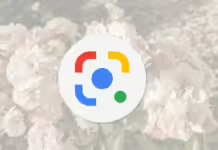—
Rebekah Hounsell: Pioneering Astrophysics with NASA’s Goddard Space Flight Center
Rebekah Hounsell, an assistant research scientist, is making significant strides in the field of astrophysics by optimizing and building infrastructure for future observations using the Nancy Grace Roman Space Telescope. This mission aims to unravel many astrophysical mysteries, such as dark energy. Additionally, Rebekah serves as a support scientist for the TESS (Transiting Exoplanet Survey Satellite) mission, assisting scientists in accessing and analyzing critical data.
Profile Summary
- Name: Rebekah Hounsell
- Title: Assistant Research Scientist
- Job Classification: Support Scientist for the TESS mission and Co-Principal Investigator of the Roman Supernova Project Infrastructure Team (PIT)
- Organization: Code 667.0
Roles and Responsibilities at Goddard
Rebekah’s roles at NASA’s Goddard Space Flight Center are multifaceted. As a support scientist for the TESS mission, she aids the scientific community in accessing and analyzing data collected by TESS. She is also a co-principal investigator for a Roman project infrastructure team, focusing on building infrastructure to support supernova cosmology with the Roman High Latitude Time-Domain Survey (HLTDS). Additionally, she is involved in the Physics of the Cosmos program analysis group executive committee, co-chairing the Cosmic Structure Science Interest Group and the Time-Domain and Multi-Messenger Astrophysics Science Interest Group.
In her various roles, she has gained insights into the workings of missions like TESS and Roman and how to make them successful for the scientific community. Missions such as TESS pave the way for future wide-area surveys like Roman by providing a wealth of high-cadence transient and variable star data, which help us better understand the universe and our place within it.
Influencing Future Observations with the Nancy Grace Roman Space Telescope
Rebekah’s team is responsible for developing a “pixels-to-cosmology” pipeline to analyze supernova data from the HLTDS. This involves creating tools to help the scientific community obtain precise supernova light curves and prism spectra, which are essential for testing various cosmological models. They are also developing tools that allow the community to test different HLTDS designs, adjusting parameters such as cadence, filters, and exposure times to optimize the survey’s scientific output.
Journey into Astrophysics
Rebekah’s fascination with astrophysics began in her childhood, growing up in a rural area in England with minimal light pollution, providing a clear view of the night sky. Her curiosity about the expanding universe ignited her passion for space and led her to focus on physics and math during her school years.
At 18, she attended Liverpool University/Liverpool John Moores, where she completed her master’s in astrophysics in 2008. She then pursued a Ph.D. focusing on classical and recurrent novae. In 2012, she received her first postdoctoral position at the Space Telescope Science Institute (STScI) in Baltimore, where she learned about Hubble’s instruments and discovered her passion for working with data.
Following this, she held another postdoctoral position at the University of Illinois Champaign Urbana/UC Santa Cruz, where she began working on the Roman Space Telescope, then known as WFIRST. She was part of the Supernova Science Investigation Team and worked to optimize the design of the supernova survey, later known as the HLTDS. Her work included publishing a paper with realistic survey simulations, incorporating various statistical and systematic effects.
Rebekah then moved to the University of Pennsylvania to work on core-collapse supernovae from the Dark Energy Survey. Despite the exciting data, she realized her true passion lay in working with mission data, leading her to her current role at NASA.
Anticipations for Roman’s Discoveries
Rebekah is excited about the Roman Space Telescope’s potential to discover a plethora of transient events, some of which may be extremely rare. These high-cadence, deep-field observations could provide new insights into the physics driving these phenomena. She is also enthusiastic about combining Roman’s data with those from other observatories, including the Vera C. Rubin Observatory and NASA’s James Webb Space Telescope.
Surprises from the Universe
Rebekah is continually amazed by the new discoveries that shed light on the universe’s evolution and our place within it. Recent discoveries include kilonovae, gravitational waves, and diverse supernovae. She believes that Roman will reveal even more extreme and complex events, further expanding our understanding of the universe.
Working at NASA
Rebekah appreciates the diverse paths that lead people to NASA, each bringing unique perspectives and contributions. This diversity is what makes NASA a dynamic and innovative organization.
Hobbies and Interests
Outside of work, Rebekah enjoys painting, drawing, and caring for animals. She also participates in outreach events, emphasizing the importance of communicating the significance of their work. In Philadelphia, she helped set up an Astronomy on Tap branch, believing in the importance of discussing what they do and why it matters.
Advice for Aspiring Astronomers
Rebekah advises those interested in astronomy to follow their passions and not to adhere to a rigid path. She encourages asking questions, learning about others’ journeys in the field, and finding what works best for oneself.
About the Author
Ashley Balzer
NASA’s Goddard Space Flight Center, Greenbelt, Md.Conversations With Goddard is a collection of Q&A profiles that highlight the talented and diverse workforce of NASA’s Goddard Space Flight Center. Published twice a month since May 2011, past editions can be read on Goddard’s “Our People” webpage.
—
This article aims to provide a comprehensive and informative overview of Rebekah Hounsell’s work and contributions to astrophysics, making it accessible to a broad audience while retaining the depth and significance of the original content.
For more Information, Refer to this article.



























![The Apex Legends Digital Issue Is Now Live! Apex Legends - Change Audio Language Without Changing Text [Guide]](https://www.hawkdive.com/media/5-Basic-Tips-To-Get-Better-On-Apex-Legends-1-218x150.jpg)


